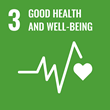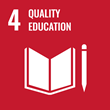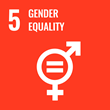Project information
National Institute of Virology and Bacteriology
(NIVB)

- Project Identification
- LX22NPO5103
- Project Period
- 6/2022 - 12/2025
- Investor / Pogramme / Project type
-
Ministry of Education, Youth and Sports of the CR
- national recovery plan
- 5.1 EXCELES
- MU Faculty or unit
-
Central European Institute of Technology
- prof. RNDr. Robert Vácha, PhD.
- Mgr. Gabriel Demo, Ph.D.
- Mgr. Martina Drabinová
- Francesco Luca Falginella, Ph.D.
- Ing. Tibor Füzik, Ph.D.
- Mgr. Mária Gondová
- Ing. et Ing. Miroslav Haman
- Mgr. Adelheid Hanáčková
- Ing. Ondřej Kroutil, Ph.D.
- Timothée Emmanuel Jonathan Rivel, Ph.D.
- Mgr. Jana Salamonová
- prof. RNDr. Robert Vácha, PhD.
- Other MU Faculty/Unit
- Faculty of Medicine
- Other MU Faculty/Unit
-
Faculty of Science
- prof. RNDr. Roman Pantůček, Ph.D.
- Mgr. Tibor Botka, Ph.D.
- Lenka Buňatická
- prof. RNDr. Jiří Doškař, CSc.
- Mgr. Adéla Finstrlová, Ph.D.
- Mgr. Jiřina Havránková
- Mgr. Vojtěch Kovařovic, Ph.D.
- Mgr. Lucie Kuntová, Ph.D.
- Mgr. Ivana Mašlaňová, Ph.D.
- Mgr. Michal Zeman, Ph.D.
- Cooperating Organization
-
Institute of Microbiology of the ASCR, v. v. i.
Institute of Molecular Genetics of the ASCR, v. v. i.
Institute of Organic Chemistry and Biochemistry of the ASCR, v. v. i.
- Responsible person RNDr. PhDr. Zdeněk Hostomský, CSc.
Palacký University, Olomouc
Prague Institute of Chemical Technology
Biological Centre of the ASCR, v. v. i.
Basic and oriented or clinical research on viruses and pathogenic bacteria is essential to understand the processes by which they cause disease, how they escape the immune system and how they can resist treatment. Therefore, research activities at the National Institute of Virology and Bacteriology will focus on characterizing pathogens causing existing and emerging infectious diseases, describing virus and bacteria interactions with the host, understanding the molecular mechanisms of pathogenesis, and developing antiviral and antibacterial agents and vaccines. Individual research groups will work on viruses and bacteria causing diseases with significant health and economic impact, including HIV-1, influenza, tick-borne encephalitis, hepatitis B, SARS-CoV-2, enteroviruses, and the bacteria B. pertussis, S. aureus, and T. pallidum. By working with pathogens that are relevant to current clinical practice, the research groups will have the expertise and equipment for the ongoing study of new pathogens that could become prevalent in the human population in the future.
Sustainable Development Goals
Masaryk University is committed to the UN Sustainable Development Goals, which aim to improve the conditions and quality of life on our planet by 2030.
Publications
Total number of publications: 138
2024
-
INVOLVEMENT OF A NOVEL RIBOSOME ASSOCIATED FACTOR INTRANSLATION REGULATION
Year: 2024, type: Appeared in Conference without Proceedings
-
Low genetic diversity of Treponema pallidum ssp. pertenue (TPE) isolated from patients’ ulcers in Namatanai District of Papua New Guinea: Local human population is infected by three TPE genotypes
PLoS neglected tropical diseases, year: 2024, volume: 18, edition: 1, DOI
-
Majority of Treponema pallidum ssp. pallidum MLST allelic profiles in the Czech Republic (2004–2022) belong to two SS14-like clusters
Scientific Reports, year: 2024, volume: 14, edition: 1, DOI
-
Membrane Adsorption Enhances Translocation of Antimicrobial Peptide Buforin 2
Journal of Physical Chemistry B, year: 2024, volume: 128, edition: 35, DOI
-
Multiprotein bridging factor 1 is required for robust activation of the integrated stress response on collided ribosomes
MOLECULAR CELL, year: 2024, volume: 84, edition: 23, DOI
-
Multivalent
Year: 2024
-
Nanoparticle induced fusion of lipid membranes
Nanoscale, year: 2024, volume: 16, edition: 21, DOI
-
Optimizing properties of translocation-enhancing transmembrane proteins
Biophysical Journal, year: 2024, volume: 123, edition: 10, DOI
-
Pathways to a Shiny Future: Building the Foundation for Computational Physical Chemistry and Biophysics in 2050
ACS PHYSICAL CHEMISTRY AU, year: 2024, volume: 4, edition: 4, DOI
-
Peptide translocation across asymmetric phospholipid membranes
Biophysical Journal, year: 2024, volume: 123, edition: 6, DOI


